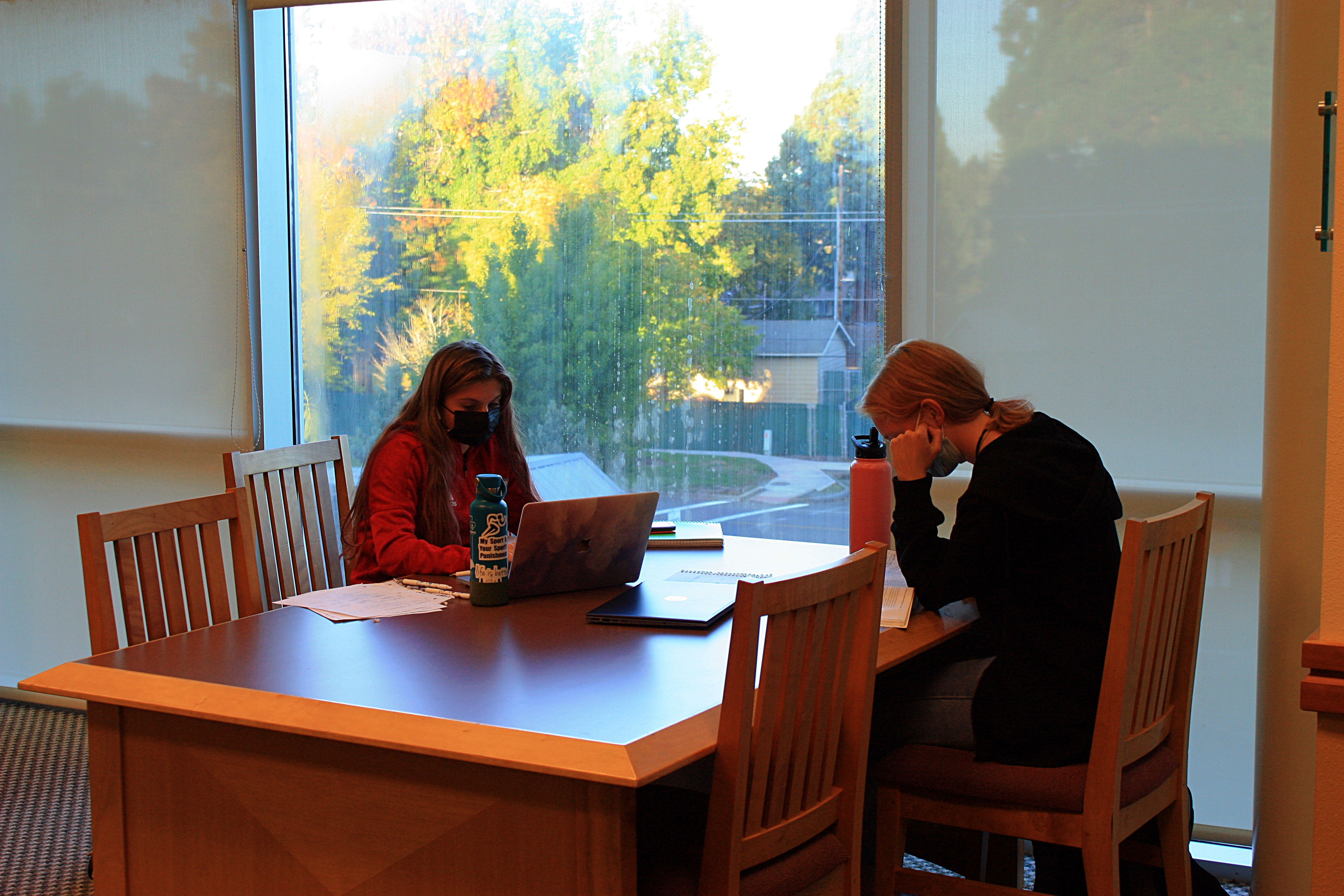Written by: Hannah Field | Editor-in-Chief
Stephanie Juanillo’s art display, “Entre Colores: Un Homenaje a la Vida y la Muerte (Between Colors: An Homage to Life and Death),” will be displayed in the Cannon Gallery in Campbell Hall until the end of October.
Featuring various acrylic paintings on canvas as well as an ofrenda — an altar in homage to Juanillo’s abuelito Berna, with candles, marigold flowers and a beautiful painting — the display puts on an equally powerful and beautiful message, honoring family and loved ones who have passed.
According to the Western calendar page, “Stephanie Juanilo’s exhibition … is a personal, bold and colorful exploration of the coexistence of grief and joy and how they both permeate the topics most important to her, such as migration, community, family, loss, distance and intergenerational healing.”
Juanillo, being a first-generation immigrant, utilizes “bold colors, patterns and textures (inspired by) Mexican iconography, Latinx music, past memories, people and nostalgia. The act of creating — whether it be painting, printmaking, collage or installation — serves as a way for Stephanie to stay connected to her Mexican roots.”
Juanillo’s Instagram, @color.obsessed, explores Juanillo’s relationship with art and projects current and past. One post features a painting on display in Cannon Gallery, with Juanillo captioning it: “Flowers have a deep cultural and emotional meaning in the immigrant community, I wanted to honor that as much as possible. This is dedicated to the physical and spiritual connection that many of us experience through nature. What a special way to stay connected to our native homes, family and traditions.”
Another post, featuring a collage piece centering around Juanillo’s abuelito Berna, states, “I wanted to emphasize and capture his joy for life. When I was in Mexico visiting my family, I was always greeted by him with a smile that eventually turned into laughter and then a warm hug. He showed me his plants and took pride in his love. Leaving Michoacán was really hard, but I carry the image of his warm smile and loving spirit in my memory always.”
In the center of the room, facing Berna’s ofrenda and the accompanying installation, a plaque with a typed letter from Stephanie Janillo read:
“When my father left his home country, he kissed the earth and cried. Days turned into months, months into years, our new life in the U.S. began. Any and every object, song, smell, food that reminded my parents of home filled our house. Distance and borders, both physical and metaphorical, were met with an abundance of my mami’s cooking passed on from her mother, grandmother and great-grandmother, soothing our neverending nostalgic void. Our garden, so meticulously cared for by my dad, became a refuge, a beautiful love for flowers and plants. I don’t know when the grief stops, the grief of not watching your parents grow old, of missing out on family celebrations and milestones. The grief of a friend or family member you were not able to say goodbye to and hug for the very last time. I don’t think it ever really stops or goes away because it is an extension of the love we still hold for a person, place and moment in time. So as each November approaches and we get closer to (Dia de los Muertos), I take the time to sit with these feelings. Marigolds decorate our altars and homes, a guide to help the spirit of those who have passed find their way back home. The souls of our loved ones return in the form of a monarch butterfly. Photographs and favorite foods of the dead adorn the ofrendas. Stories are shared, (life that was lived and is yet to live is celebrated and cries and laughter synchronize. I’m reminded that) to love and to be loved is a gift and one of the greatest honors we get to experience as humans. I’m reminded of the value, power and resilience of keeping traditions alive.
So I ask you, if you had to leave your home today, if you had to leave your family, friends and everything you’ve ever known and loved, what would help you stay connected? What memories would you preserve? What pictures would you decorate your new home with? How would you (spend your last week with those you love? What would you leave unsaid? What would become a) physical representation of your grief and longing? How would your definition of home change?
May this show be a love letter to my family and all of the immigrants who are forced to leave their homeland. Their story and their sacrifice are always with me and woven into every piece I make. (May this show be an invitation for you to love more intentionally, to celebrate life and sit) with whatever grief you are currently experiencing.”
Contact the author at howleditorinchief@mail.wou.edu.




